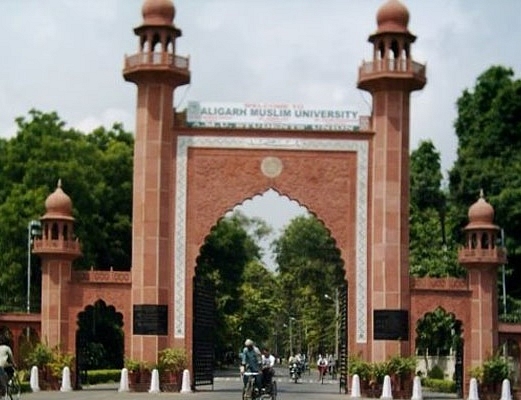
The Questions We Should Be Asking About AMU As A Minority Institution
The AMU controversy should have been
used to ask more basic questions about what institutions as large as AMU should
be doing, but instead it has become about preserving the “minority” character
of the university.
Barring the usual subsidies available to schools run by anybody, what is the logic of the centre funding AMU if it wants to retain its minority character?
AMU wants to eat its cake and have it too: it wants central funding on a par with other central universities, and yet wants to be a minority institution.
Can
Muslims, with 180 million population, really be called minorities incapable of
defending their educational and cultural rights?
Will Muslims be less inward looking if they studied in an institution with a plural character or one with a sectarian character?
The controversy over whether or not the Aligarh Muslim University (AMU) is a minority institution has, as is usual in India, acquired communal undertones. The controversy should have been used to ask more basic questions about what institutions as large as AMU should be doing, but instead it has become about preserving the “minority” character of the university.
The questions we need to ask are more basic.
One,
should a publicly funded university established by the government of India be
run as a minority institution? Should the public at all be funding an
institution meant “primarily” for one community? Barring the usual subsidies
available to schools run by anybody, what is the logic of the centre funding
AMU if it wants to retain its minority character?
You can be a minority institution if you fund it largely from community resources, not when the taxpayer is paying most of the bills. But AMU wants to eat its cake and have it too: it wants central funding on a par with other central universities, and yet wants to be a minority institution.
Two,
and this is not about AMU. Should only so-called minorities be allowed to set
up their own institutions, or should autonomy be the natural right of any
community to do so? Why does one have to be a minority to obtain a degree of
autonomy from state interference? The definition of a minority depends on the
geographical space in which a headcount is taken.
Thus, if you take the whole
country as the base, Muslims would be a minority. If you take a district or
state or city, the picture would be entirely different. In Uttar Pradesh, 231
of the 915 towns have a Muslim majority. Should Hindus be declared minorities
in these towns? And does autonomy not matter if you are a “majority”
institution?
Three,
the third question is whether universities should be given the same status as colleges
and schools. A university, by its very definition, is about promoting learning
and liberal education on a broad scale. While it is perfectly all right for
Muslims or Hindus or anybody to run colleges that have a sectarian character,
should universities be so narrowly defined? Even though we in India are nowhere
near the ideal of being truly liberal in any sphere, why must we must we move further
away from the ideal?
Why should even universities be covered under article 30 of the constitution, which guarantees minorities “the right to establish and administer educational institutions of their choice.” This right should be about establishing colleges or schools, not entire universities which ought to have a broader, liberal character, as Bhupender Yadav and Vikramjit Banerjee argue in this Indian Express article. This does not mean universities should not occasionally be minority institutions, but in this case they should find the resources within the community.
In India, we have placed a premium on everyone seeking a minority status. A microscopic minority can and should be protected, since it does not have the numbers to do its own thing and could be crushed under the weight of majoritarian thinking or neglect. But can Muslims, with 180 million population, really be called minorities incapable of defending their educational and cultural rights? Should they be using their numerical clout to create liberal institutions or sectarian ones?
Faizan Mustafa, Vice-Chancellor of Nalsar University of Law in Hyderabad, defends the minority character of AMU and quotes Sir Syed Ahmad Khan’s intentions in creating the Muhammadan Anglo Oriental College which has morphed into today’s AMU. He quotes Sir Syed as saying: “The main reason behind the establishment of this institution…was the wretched dependence of the Muslims… . Their religious fanaticism did not let them avail (sic) the educational facilities provided by the government schools and colleges. It was, therefore, deemed necessary to make some special arrangement for their education.” (Italics mine).
Sir Syed was a moderniser, and the fact that he referred to Muslims’ “religious fanaticism” as the reason for creating a separate college for them is significant. Since Mustafa uses Sir Syed’s statement to argue that AMU should be “primarily” for Muslims, we need to ask him a follow-up question: can a community be mainstreamed by creating institutions primarily for them, thus denying them the right to interact with a wide variety of people from multiple faiths and ethnicities and broaden their understanding of the world? Is intellectual ghettoisation the answer to Muslim backwardness?
Will Muslims be less inward looking if they studied in an institution with a plural character or one with a sectarian character? AMU as a minority institution would fence off Muslims into an intellectual island, when the need is just the opposite – breaking down the walls between communities.